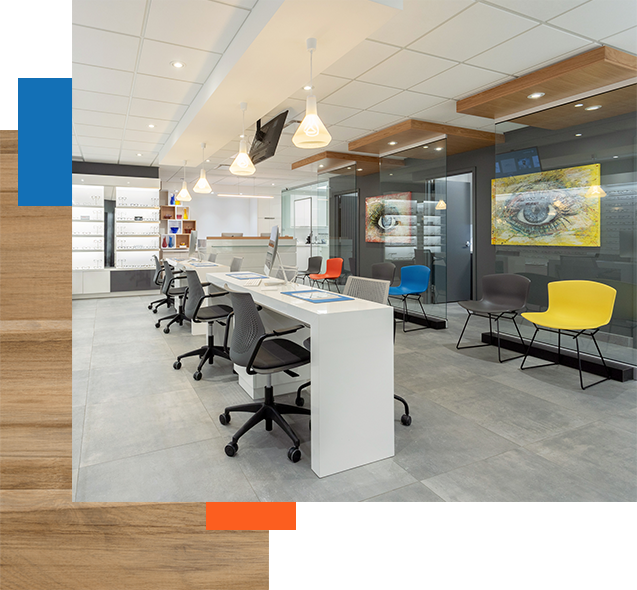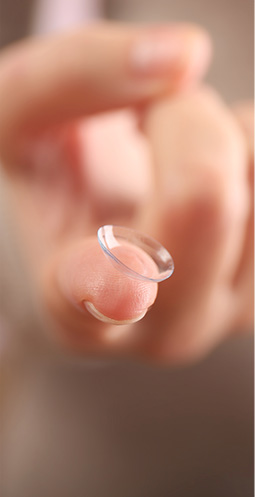
What is Blepharitis?
Blepharitis literally means inflammation of the eyelids (blepha means “eyelid”, and itis means “inflammation”). It’s a very common chronic condition that affects over 82 million people. While there is no cure for blepharitis, it can be managed very well with ongoing treatment and care.
What Are the Symptoms of Blepharitis?
Symptoms can range from very mild to severe. In mild cases, you may not have any symptoms at all or only minor irritation. In more severe cases, blepharitis can lead to chronic eyelid infections, recurrent styes, and misdirected eyelashes. In extreme, untreated cases, damage to the eyelid margins or even corneal scarring can occur.
Blepharitis symptoms can include one or more of the following:
- Crusting at the base of the lashes
- Itchy, gritty eyes
- Light sensitivity (photophobia)
- Red eyes and eyelids
- Excessive tearing
- Dry eyes

What Causes Blepharitis?
There are 2 main types of blepharitis: anterior blepharitis and posterior blepharitis.
Anterior Blepharitis
Anterior blepharitis affects the outside, front of the eyelid. It’s typically characterized by crusting and hard scales at the base of the lashes. Some common types and causes of anterior blepharitis include:
- Staphylococcal anterior blepharitis is usually caused by an overgrowth of staph bacteria that live around the eyelashes.
- Demodex blepharitis is caused by a demodex mite infestation. It’s often characterized by cylindrical dandruff at the base of the eyelashes.
- Seborrheic anterior blepharitis is related to scalp and eyebrow dandruff. With this type, the eyelashes tend to be more greasy.
Posterior Blepharitis
Posterior blepharitis affects the inner eyelid. In most cases, it’s related to meibomian gland dysfunction, which is caused by blockage of the meibomian gland openings (the oil glands of the eyelids).
Diagnosing Blepharitis

Your optometrist will use a combination of exams to determine if you have blepharitis, including:
- Questions about your symptoms, medical history, and family medical history.
- Visual examination of your eyes and eyelids.
- Slit lamp biomicroscope examination of your eyelashes, eyelid margin, and meibomian (oil) glands.
- Digital imaging of your eyelashes, eyelid margins and meibomian glands.
Blepharitis Treatments
Eyelid Wipes
Specialized eyelid wipes help keep your eyelids clean and reduce the amount of inflammation-causing bacteria. Treatment for demodex blepharitis includes specialized wipes that contain a low concentration of tea tree oil as this helps to eradicate the demodex mite.
Eyelid Warming Masks
Warming masks can provide relief for anterior and posterior blepharitis. The gentle heat helps soften the crusts at the base of the eyelashes and the hardened oils in the meibomian glands.
BlephEx Treatment
BlephEx is an in-office blepharitis treatment. The treatment uses a small rotating micro-sponge to gently remove bacterial toxins, excess bacteria, and biofilm from the eyelid margins and eyelashes. The procedure is painless, and patients usually experience significant, instant relief from their blepharitis symptoms.
Mibo ThermoFlo
Mibo Thermoflo is an in-office treatment specifically for posterior blepharitis caused by meibomian gland dysfunction. This innovative device uses thermoelectric heat to gently heat and massage the eyelids to the melt hardened oils (meibum). By melting hardened oils, Mibo Thermoflo helps improve the quality and quantity of oils in your eye, leading to reduced symptoms.
Preservative-Free Ocular Lubricants
Blepharitis may contribute to dry eyes or increase the symptoms of existing dry eyes. Along with lid wipes, preservative-free drops can help control dry eye and blepharitis symptoms.
Prescription Eye Drops
Short-term use of prescription antibiotic or steroid eye drops may be prescribed by your optometrist to control episodes of inflammation.
Related Conditions
If you suffer from blepharitis, you may be at an increased risk for the following conditions.
Dry Eyes
Dry eyes and blepharitis have very similar symptoms, and these 2 conditions often co-exist. Blepharitis may lead to dry eyes as it can disrupt the quality of our tear film, making existing dry eye symptoms worse.
Styes (Internal Hordeolum)
Styes are a bacterial infection of one or more of the meibomian glands. People with blepharitis are more likely to have recurrent styes, due to the presence of excess bacteria on the eyelid margins. Prescription antibiotics and eyelid warming masks are often effective in treating these styes.
Chalazion
A chalazion is a sterile hardened lump that develops on the eyelid margin, usually following a stye. It’s caused by accumulated and hardened oil in one or more blocked meibomian glands. Heat therapy with an eyelid warming mask may be effective in slowly melting the hardened oil and draining the chalazion.
Treatment Products
Visit our Online Store to view our blepharitis treatment products.
Our Vision in Action
At Stoney Creek Eye Care & Eyewear Boutique our trusted team of eye doctors is committed to providing you with high-quality eye care, stylish frames, and personalized attention. We offer a wide variety of services, including:
Convenient Location, Extended Hours,
and Direct Billing
We understand that life is hectic. We want to help make it a little simpler, which is why our centrally-located optometry practice in Stoney Creek offers extended hours on Saturdays. We’re also happy to directly bill most major insurance companies on your behalf. And on top of all that? We’ve got plenty of free parking. Stoney Creek Eye Care & Eyewear Boutique will always do whatever we can to make your life a little easier, located in the Health Science Building.
Our Comprehensive Eye Care Services
At Stoney Creek Eye Care, we’re proud to offer the following eye care services:
- Eye Exams
- Pediatric Eye Exams
- Contact Lens Fittings
- Dry Eye Treatment
- Myopia Control
- Premium Glasses & Sunglasses
- And More!
Serving Stoney Creek and More
We’re proud to be your trusted local optometrist in Stoney Creek and the Greater Hamilton area. We also serve the communities of Cherry Heights, Fruitland, Vincent, Riverdale East, McQuesten West, Normanhurst, Bartonville, Rosedale, Red Hill, and the surrounding areas.
How to Find Us
We’re conveniently located in Stoney Creek, just off King St. E. You can find us on Mountain Ave. S., in the Health Science Building, right next to the Stoney Creek Chamber of Commerce.
Book an appointment with your optometrist in Stoney Creek today!

Stoney Creek Eye Care & Eyewear Boutique
- 15 Mountain Ave S #110
- Stoney Creek, ON L8G 2V6
Contact Information
- Phone: (905) 662-8863
- Email: [email protected]
- Located in the Health Sciences Building
Clinic Hours
- Monday9:00 AM - 6:00 PM
- Tuesday9:00 AM - 6:00 PM
- Wednesday9:00 AM - 6:00 PM
- Thursday9:00 AM - 6:00 PM
- Friday10:00 AM - 5:00 PM
- Saturday8:00 AM - 1:00 PM
- SundayClosed






